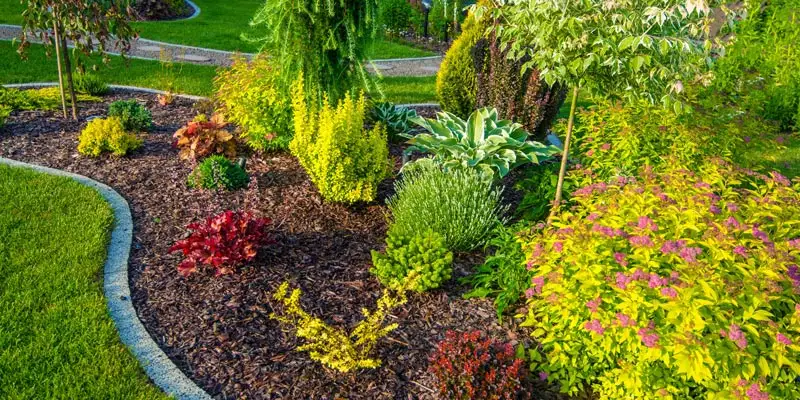Landscape Design Fundamentals Explained
Landscape Design Fundamentals Explained
Blog Article
How Landscape Design can Save You Time, Stress, and Money.
Table of ContentsThe Definitive Guide for Landscape DesignThe Facts About Landscape Design UncoveredWhat Does Landscape Design Mean?The Definitive Guide to Landscape Design
A yard can usually be split right into 3 locations: public (the front lawn), exclusive (the back backyard), and service (usually the side backyard). The location of task locations depends mainly on the kind of area, the size of room required, the kind of task, and the wanted distance to various other tasks and frameworks.
The outside wall of your house commonly works as the first wall surface or starting point of an exterior area. Incompatible uses must be divided, and relevant activities, such as food preparation and eating, must be placed with each other to make the yard extra reliable and pleasurable. When utilizing hardscape to produce areas, use building and construction material comparable to that made use of in the house for continuity from your house into the yard.
Linked spaces. Credit Scores: Gail Hansen, UF/IFAS Using comparable hardscape features and repeating plants draws the eye around the garden. Important factors in the process can be highlighted with growings or attributes that attract focus and urge activity in a certain instructions. Relocating along the path takes a person from one area to the following and allows the user to have a range of experiences.
This provides a feeling of mystery that promotes expedition and exploration of the landscape. From a layout viewpoint, plant materials have 3 significant functions in the landscape: aesthetic, structural and practical. Visually, plants produce an aesthetically positive atmosphere and structurally plants organize and define spaces. Plants are practical since they can change the atmosphere for the convenience of the user by changing light, temperature and humidity.
The Buzz on Landscape Design
For mental convenience plants are made use of as physical or suggested obstacles for personal privacy and safety. Physical barriers block both the view and accessibility to a room and consist of fencings, walls and plant bushes.
Physical and suggested obstacles. Credit Rating: Gail Hansen, UF/IFAS For these factors, the kinds of plants to be made use of (such as trees, shrubs, or groundcovers) need to be selected in the early stages of preparation. Plant types are selected for their practical capacities to make sure that their future objective and called for space can be thought about at the exact same time.
The overhanging aircraft, the upright aircraft and the ground plane must all be considered to create room. As soon as the form of a plant bed has been developed, the plants ought to be massed (grouped) and layered to accomplish aesthetic unity and the desired amount of room. The size of a plant mass will depend on the complete dimension of the yard, the dimension of the private plants in the mass, and the emphasis or influence preferred from you can find out more the plant material.
Each plant mass remains in front of, behind, or beside, one more mass. Number 11. Horizontal plant layers. Credit Rating: Gail Hansen, UF/IFAS Figure 12. Upright plant layers. Credit History: Gail Hansen, UF/IFAS Repeating plants within a mass and duplicating masses with similar plants ties the yard with each other. The private plant characteristics must be considered to efficiently layer and mass plants.
Some Of Landscape Design
All plant make-ups begin with the primary framework plants, the large, mostly evergreen history plants-such as the trees and huge shrubs. These plants separate or enframe spaces, regulate the dimension of the area, and give the beginning point for choosing the suitable qualities of the second layer, midground plants, for massing and infill.
Crucial points in the garden should be highlighted by the usage of distinct plants, distinct structures, or garden ornaments. Noting thresholds or entrances to spaces can be made with gateways, arbors, and steps, or with making use of one-of-a-kind and colorful plants. The kind and/or design theme of the yard will certainly commonly assist figure out the important factors and exactly how they must be highlighted.
Other vital places in the lawn are focal points, which is made use of to visually arrange a landscaped location. Different point of views or viewpoints can reveal various structures in the landscape that might need a range of focal factors.
The 10-Minute Rule for Landscape Design
Plant kinds. Credit Scores: Gail Hansen, UF/IFAS After kind, texture is the next dominant function of a plant; rugged, tool and great appearances can be utilized for contrast and emphasis in the landscape.

The pleasurable aroma of plants, the audio of wind in the trees, the audio and appearance of water, and the shades and appearances of sculptures, pots and yard furnishings all add to the experience of the garden. One information that is frequently ignored is the impact of light on the aesthetic appeals of the plants.
The entire garden modifications in feature and appearance over the program of the day, and the program of a year, as the light and temperature modification from morning to evening and period to period. anchor Plant option need to take into consideration a plant's growth rate, its fully grown dimension and form, and additional hints the maintenance it will require.
It is essential to recognize the ultimate fully grown dimension of plants so they can be put in the right area and spaced correctly when they are mounted. Offering plants room to expand is an obstacle due to the fact that the usual fully grown dimension is usually based upon ideal growing conditions and the environmental conditions of a website might trigger a plant to grow larger or stay smaller sized.
Report this page